Tungsten Electrode
What is Electrode? An electrode is an electrical conductor used to make contact with a nonmetallic part of a circuit (e.g. a semiconductor, an electrolyte or a vacuum). The word was coined by the scientist Michael Faraday from the Greek words elektron (meaning amber, from which the word electricity is derived) and hodos, a way.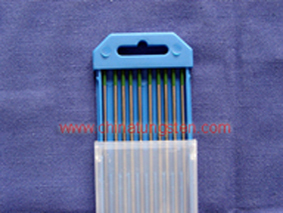 |
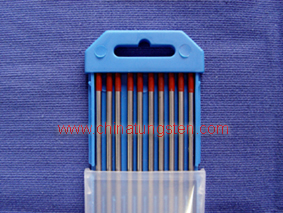 |
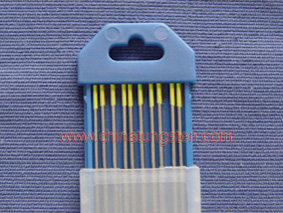 |
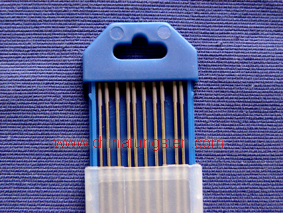 |
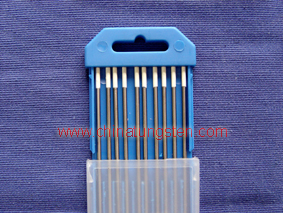 |
|
|
Tungsten Electrode for TIG welding:
Tungsten electrodes are used when arc welding with the Tungsten Inert gas (TIG) process or when plasma welding. In both processes the electrode, arc and weld pool are protected from atmospheric contamination by an inert gas. A tungsten electrode is used because it can withstand very high temperatures with minimal melting or erosion. Tungsten electrodes are made by powder metallurgy and are formed to size after sintering.
TIG welding tungsten electrodes usually contain small quantities of other metallic oxides which can offer the following benefits:-
- facilitate arc starting
- increase arc stability
- improve current-carrying capacity of the rod.
- reduce the risk of weld contamination
- increase electrode life
Oxides used are primarily those of zirconium, thorium, lanthanum, yttrium or cerium. Additions are usually of order 1%-4%. All these oxides greatly improve arc initiation, especially when direct current (DC) welding is employed. Thorium oxide (thoria) has been used for many years having been found effective in terms of long life and thermal efficiency. Zirconium oxide (zirconia) has been commonly used for alternating current (AC) TIG welding, normally for welding aluminium.
| Type | Grade | Color | Chemical Composition (%) | Features | ||
| R.E | Impurities | W | ||||
| Pure | WP | Green | / | ≤0.05 | Balance | Non-radioactive, AC welding, aluminum, magnesium, their alloys |
| Thorium | WT10 | Yellow | 0.9~1.1 | ≤0.05 | Balance | Excellent electron emission, overall performances, high current-carrying capacity radioactivity, DC welding, carbon steel, stainless steel, nickel and titanium alloys. |
| WT20 | Red | 1.8~2.2 | ≤0.05 | Balance | ||
| WT30 | Purple | 2.8~3.2 | ≤0.05 | Balance | ||
| WT40 | Orange | 3.8~4.2 | ≤0.05 | Balance | ||
| Lanthanum | WL10 | Black | 0.9~1.1 | ≤0.05 | Balance | Non-radioactive, excellent electric conductivity and welding capacity, high current-carrying capacity, minimum ratio of burnt area, DC welding |
| WL15 | Gold | 1.3~1.7 | ≤0.05 | Balance | ||
| WL20 | Blue | 1.8~2.2 | ≤0.05 | Balance | ||
| Cerium | WC10 | Pink | 0.9~1.1 | ≤0.05 | Balance | Non-radioactive, easier arc initiation under low current circumstances, low arc- maintaining current, pipelines, small components and discontinuous welding |
| WC15 | Orange | 1.3~1.7 | ≤0.05 | Balance | ||
| WC20 | Grey | 1.8~2.2 | ≤0.05 | Balance | ||
| Yttrium | WY20 | Blue | 1.8~2.2 | ≤0.05 | Balance | Non-radioactive, long and slim arc beam with high compression, deeper burning groove under medium and high current circumstances |
| Compound | WX | Cyan | 1.0~5.0 | ≤0.05 | Balance | Different additives |
All the types of tungsten electrodes can be made with surface conditions of drawn, electrolytic polished, ground and swaged.
If there is any interest in pure tungsten products, please feel free to contact us through the following methods.
Email: sales@chinatungsten.com
Tel.: +86 592 512 9696/+86 592 512 9595
More info>>
